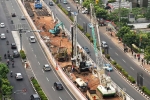Eco-friendly power plant: Bali's dream of energy self-sufficiency
This article has been translated by PwC Indonesia as part of our Indonesia Infrastructure News Service. PwC Indonesia has not checked the accuracy of, and accepts no responsibility for the content.
Bisnis Indonesia - Pembangkit listrik ramah lingkungan: Mimpi Bali berswasembada energi
21 March 2025
By Harian Noris Saputra
Bisnis, Denpasar – The Bali Provincial Government is committed to using environmentally friendly power plants to build energy independence and create a sustainable living ecosystem on the Island of the Gods.
Bali Governor I Wayan Koster stated that the power plants to be built must be environmentally friendly. "To keep Bali clean, we must use environmentally friendly power plants," Koster explained recently.
Koster also aims for Bali to be energy self-sufficient, meaning it will not depend on electricity supply from outside the region as it currently does, with a portion of Bali's electricity supply coming from the Paiton Power Plant in East Java.
Bali's electricity supply also comes from several power plants within the island, such as the Celukan Bawang Power Plant with a capacity of 380 MW, the Pesanggaran Gas Power Plant (PLTG) with 200 MW, the Pesanggaran Diesel Power Plant (PLTD) with 299 MW, the Pemaron Gas and Steam Power Plant (PLTGU) with 97.6 MW, the Gilimanuk Gas Power Plant (PLTG) with 130 MW, and the Kutampi Diesel Power Plant (PLTD) with 11.7 MW.
However, the effort to build large-capacity non-coal or environmentally friendly power plants is neither cheap nor easy.
Several environmentally friendly power plant options have emerged and have already begun to be realised, such as solar power plants (PLTS), which have been implemented for several years, starting from some offices to households in Bali.
However, according to PLN, building large-scale solar power plants requires extensive land, while in Bali, land is very limited. The calculation is that 1 hectare of land only produces 1 MW of electricity.
Senior Manager of Distribution at PLN Distribution Main Unit (UID) Bali, Putu Eka Astawa, stated that if all the rooftops in Bali were fitted with solar panels, they would only produce around 100 MW of electricity, or just 10% of Bali's electricity needs. "So, only 10% of Bali's electricity needs," Eka explained to the media.
Eka explained that in 2025, under the direction of the Governor of Bali, the installation of rooftop solar power plants in government offices will begin. In the first phase, it is targeted to produce 19 MW to 20 MW. This is expected to add to the electricity from environmentally friendly power plants. Bali has also built mini-hydro power plants (PLTMH) in several dams, such as the PLTMH in the Titab Dam. However, the energy produced is only 20 Kwp. There is also the Muara Panji PLTMH in Buleleng with a capacity of 2.3 MW.
In addition to solar power plants, the government had previously considered building a geothermal power plant (PLTP) in Bedugul Tabanan. According to records on the official website of the Ministry of Energy and Mineral Resources (MoEMR), the geothermal potential in Bedugul reaches 225 MW.
However, the construction of this geothermal power plant stalled due to pros and cons, related to public concerns about its impact on water quality after the existence of the geothermal power plant.
In addition to environmental issues, business news in 2015 reported that the then Governor of Bali, I Made Mangku Pastika, rejected the plan to build the geothermal power plant. Mangku claimed he never approved the construction of the geothermal power plant in Bedugul.
"I never approved the continuation of this project, so the public need not be anxious and worried," Mangku said at the time.
Electricity needs
Senior Manager of Distribution at PLN Distribution Main Unit (UID) Bali, Putu Eka Astawa, stated that electricity consumption in Bali during peak load reaches 1,189 MW, with 270 MW or 22.7% of the peak load supplied from Java.
It is projected that electricity consumption in Bali during Nyepi Day will decrease by 20%-27% to only 883 MW, down from the average peak load during normal conditions of 1,000-1,189 MW due to restrictions on the use of lights, especially in open areas.
The decrease in consumption occurs in all sectors, from office customers, industry to households. "The most dominant reduction in electricity consumption during Nyepi is in offices, followed by households and industry. Household electricity consumption decreases by 15%-20%, and the factor of people returning to their hometowns also drives down electricity usage," Eka explained on Tuesday (18/3). Despite the restrictions on lighting, PLN does not carry out total blackouts in Bali, and power plants continue to operate, especially supplying vital areas such as hospitals.
Additionally, Eka mentioned that there has been no request for total blackouts from traditional villages in Bali, including Nusa Penida Island, which last year carried out total blackouts at night.
PLN has also prepared 1,058 personnel spread across 90 posts throughout Bali. The standby officers will be on duty during the Nyepi and Eid periods to anticipate power disruptions.
PLN's electricity consumption is projected to rise again during Eid with a load of 998 MW, still below the peak load during normal conditions, which averages above 1,000 MW.
Eka explained that the large number of urban residents returning to their hometowns from Bali is the reason for the decrease in electricity consumption during Eid. Additionally, some offices do not operate due to the long holiday.
Electricity consumption in Bali will return to peak load after the end of the Eid holiday. Along with the return flow of Eid, the need for electricity supply from outside Bali also increases. At that time, the urgency of energy self-sufficiency in this province becomes evident again.


















